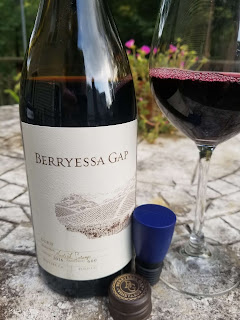"Members of Spainish nobility, the Vilarnau family settled in this special place that is Penedés in the 12th century. Vilarnau is a contraction of the latin, Vila Arnau, in other words the Arnau family’s “country house, or Domus”. Formerly it stood within the estate of the Castillo de Subirats (Subirats Castle) where vines were already being grown in the 12th century. Albert de Vilarnau, whose name has been given to what is currently the brand’s most exclusive cava, was the singular character who was responsible for increasing the family’s power back in the 14th century. He was also a patron of the church of Santa Maria de Vilarnau." History of Vilarnau
Our household ended dreadful 2020 on a high with two bottles of Vilarnau brut cava courtesy of Gonzalez Byass USA. This cava house is located within this sparkling wine's home territory just outside of Barcelona. In 1949, "the owners first sold a cava made from grapes that had been grown on the 'Can Petit i Les Planes de Vilarnau' estate, for centuries". They became part of the Gonzalez Byass family in 1982 which allowed them to modernize operations in 1985.
Vilarnau continues to utilize the “Can Petit i les Planes de Vilarnau” estate which is situated on 20 hectares and protected from the cold Pyrenean winds by the nearby Montserrat mountains. On the east, the vines receive coastal influences from the Mediterranean Sea. Vilarnau also sources fruit from d’Espiells, the highest, windiest part of the municipality of Sant Sadurni d’Anoia. Bordered to the south by the coastal Serrelada mountains and to the north by the Montserrat mountains, the vineyard enjoys an exceptional microclimate. The two wines we received from Gonzalez Byass are from Vilarnau's Trencadís Edition. These beautiful bottles are inspired by the Trencadís mosaic that was used in the "modernist art movement in Catalonia, created from tiny fragments of broken ceramic tiles, roof tiles or crockery. The catalan architects Antoni GaudÍ and Josep MarÍa Pujol used “trencadÍs” in many of their designs, the most famous probably being “Parc Güell in Barcelona". Vilarnau Brut Reserva NV ($14.99)
The two wines we received from Gonzalez Byass are from Vilarnau's Trencadís Edition. These beautiful bottles are inspired by the Trencadís mosaic that was used in the "modernist art movement in Catalonia, created from tiny fragments of broken ceramic tiles, roof tiles or crockery. The catalan architects Antoni GaudÍ and Josep MarÍa Pujol used “trencadÍs” in many of their designs, the most famous probably being “Parc Güell in Barcelona". Vilarnau Brut Reserva NV ($14.99)As beautiful as the bottle, this is a blend of 50% Macabeo, 35% Parellada, and 15% Xarel·lo and from grapes grown in d’Espiells. The grapes are fermented separately then blended before the second fermentation in this very complex wine. It's weighty, bready, and has notes of green apples.
Vilarnau Brut Reserva Rosé NV ($15.99)
This is an organic blend of 85% Garnacha and 15% Pinot Noir from the “Can Petit i les Planes de Vilarnau” estate. In fact, Vilarnau became one of the first estates in Penedes to plant Pinot Noir back in 1991. Another excellent sparkler this time with textured strawberries with a bready effervescence.
Cheers to sparkling wine under $16 and a Happy and Healthy 2021.
Disclosure: We received samples from Gonzalez Byass USA in order to share our opinion about their products, but this isn’t a sponsored post.

















































